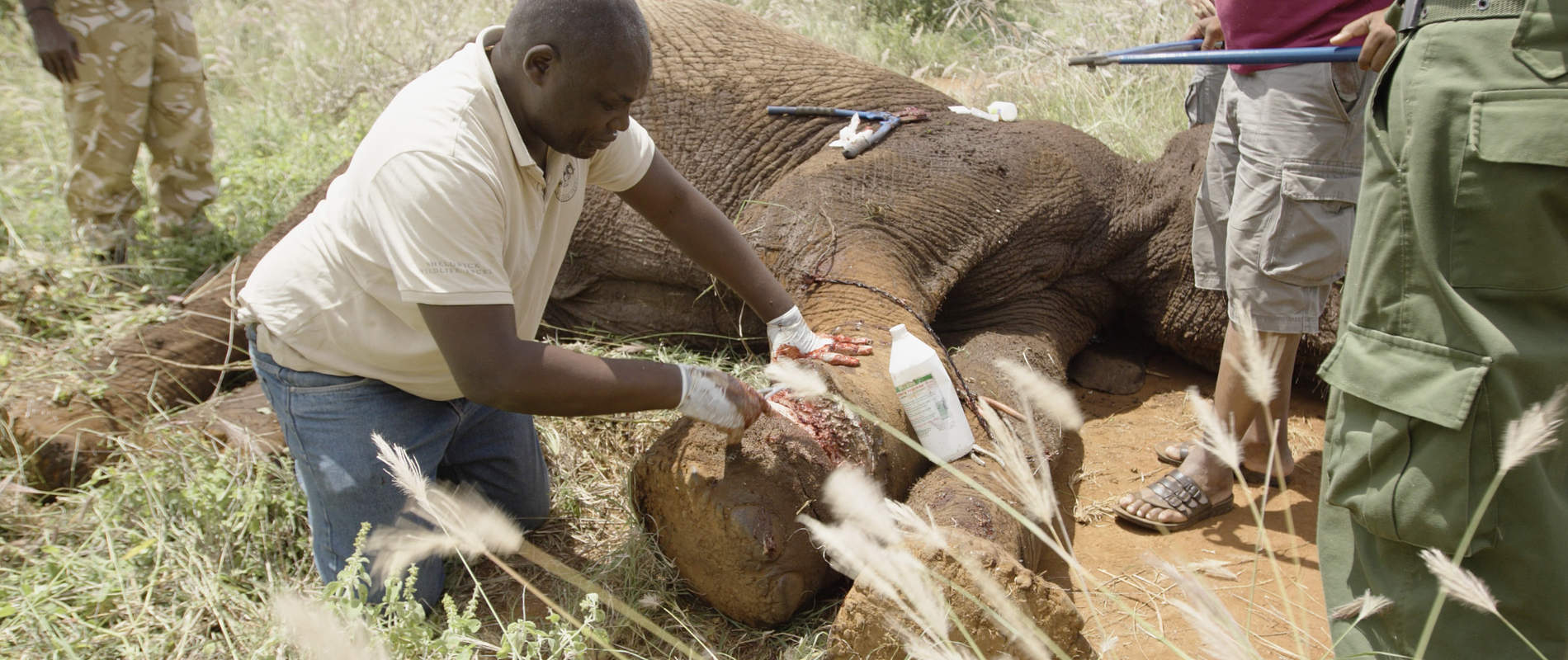One of the greatest threats to wildlife doesn’t shatter the air like a bullet or consume the body like a poisoned arrow. Instead, it lays in wait, camouflaged by the very habitat its quarry calls home.
We are, of course, referring to the deadly snare. Simple but lethal, these wire or rope loops have an immortal lifespan. Affixed to a stable post or tree trunk, they cinch noose-like around their victims. Even those who are large enough to break away are not safe: Taut snares can inhibit an animal’s ability to eat and move, injuries become infected, and the consequences can be fatal. Poachers typically set them to catch small animals, which are then sold as bushmeat on the black market. However, snares are as indiscriminate as they are cruel, capable of killing a creature as little as a dik-dik or as large as a bull elephant.
Tragically, the use of snares is on the rise. SWT/KWS Mobile Veterinary Units have incontrovertible evidence to support this: In 2017, snare victims made up 9.9% of annual cases. Fast forward five years, and snare victims accounted for more than a quarter (26.1%) of the 2022 caseload. Snare victims run the gamut — leopards, lions, zebras, giraffes, buffalos, baby and big elephants — no one is safe. Rapid intervention is key, and very often, our teams have been able to save patients who would have otherwise been served a death sentence.
Data from SWT/KWS Anti-Poaching Teams corroborate the rising use of snares: In the same five-year period, between 2017 and 2022, the number of snares confiscated by rangers rose 230%. It is important to note that the number of Anti-Poaching Teams also increased during this time. Thus, these figures indicate both a rise in poaching and the impact of having boots on the ground. Through their daily patrols, our teams are able to seize snares that otherwise would have been a death trap.
In this video, discover how our SWT/KWS Tsavo Mobile Vet Unit treated a bull elephant for snare wounds. He certainly wasn’t the poacher’s target, but he was unlucky enough to cross the wire loop’s path. Left unattended, the injury would have proved fatal. Thanks to speedy intervention, he now has the best possible chance for survival.
